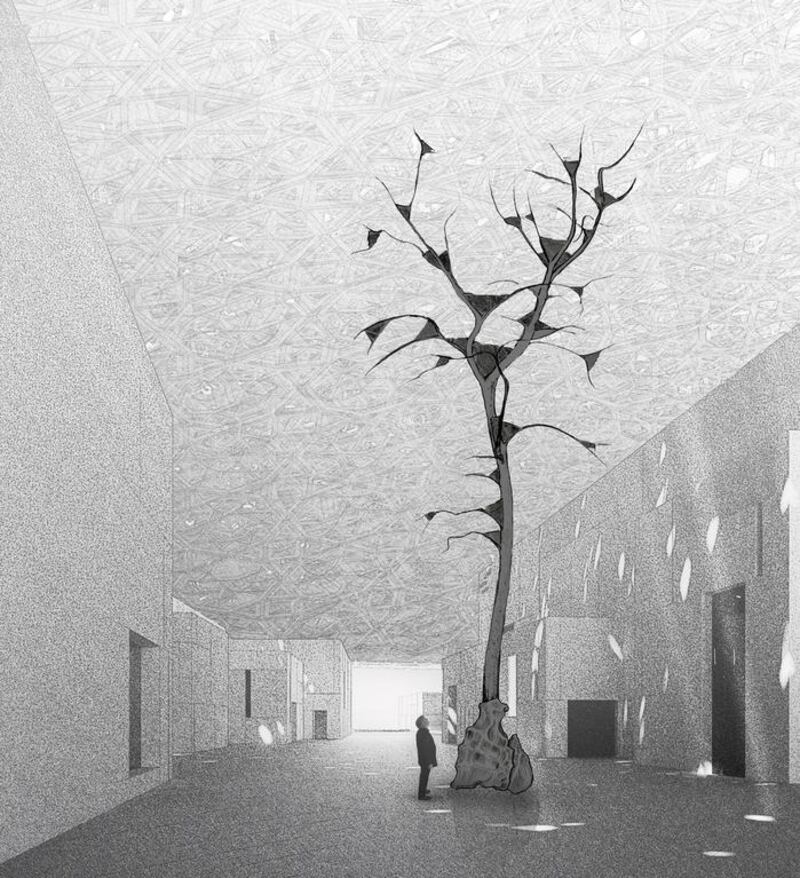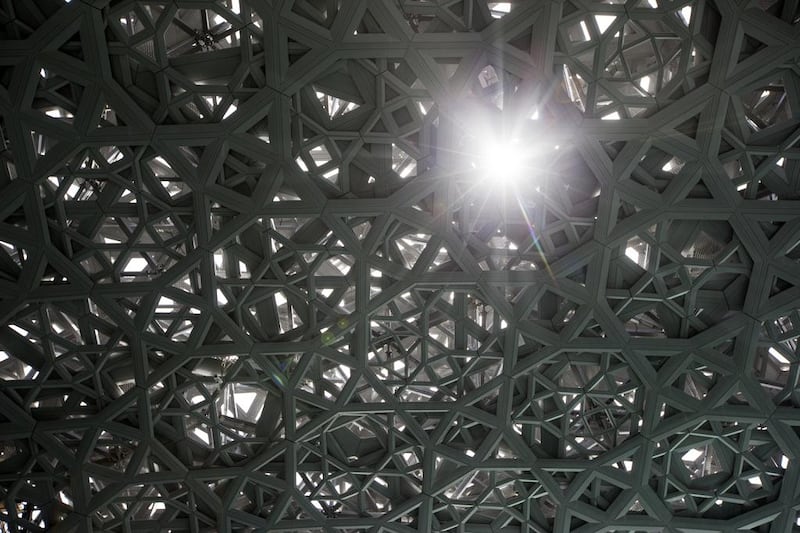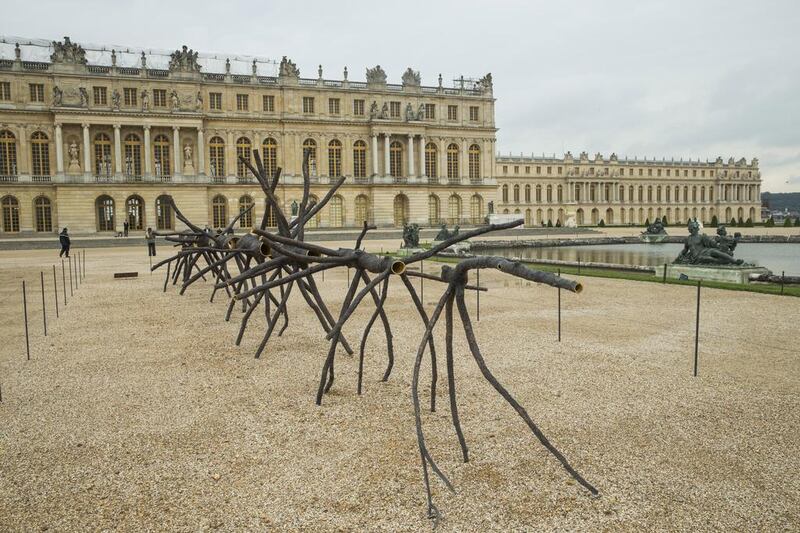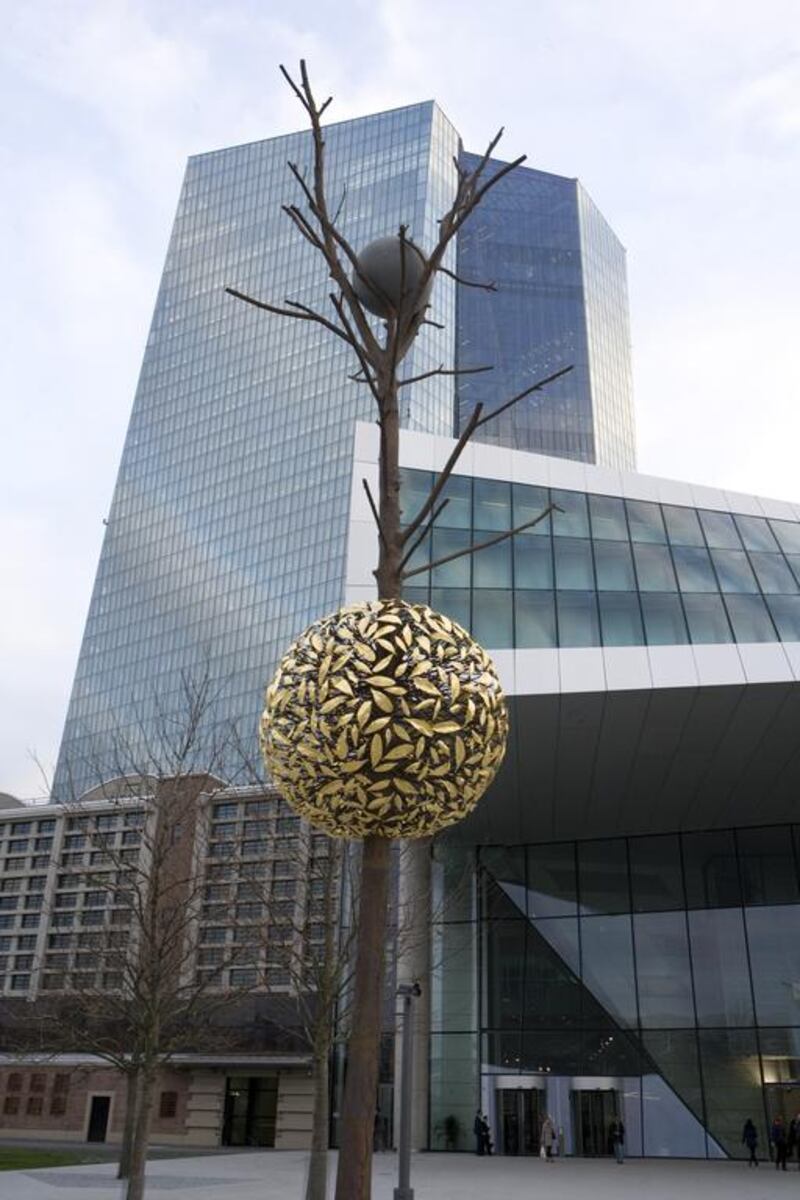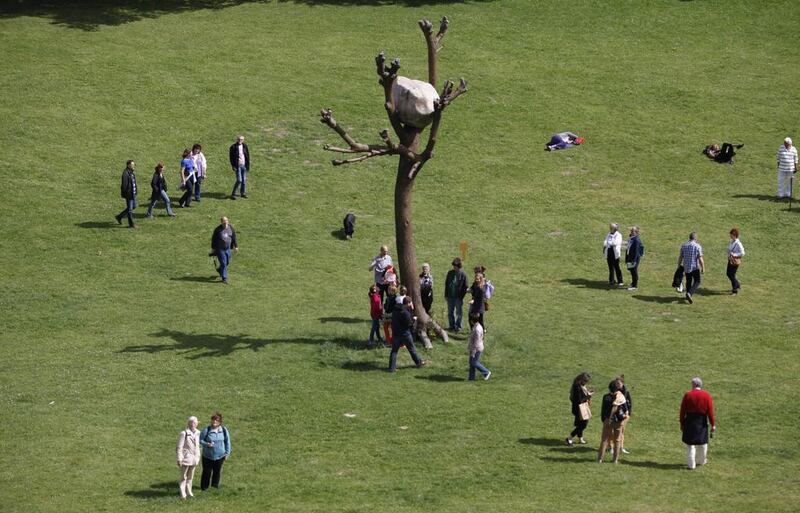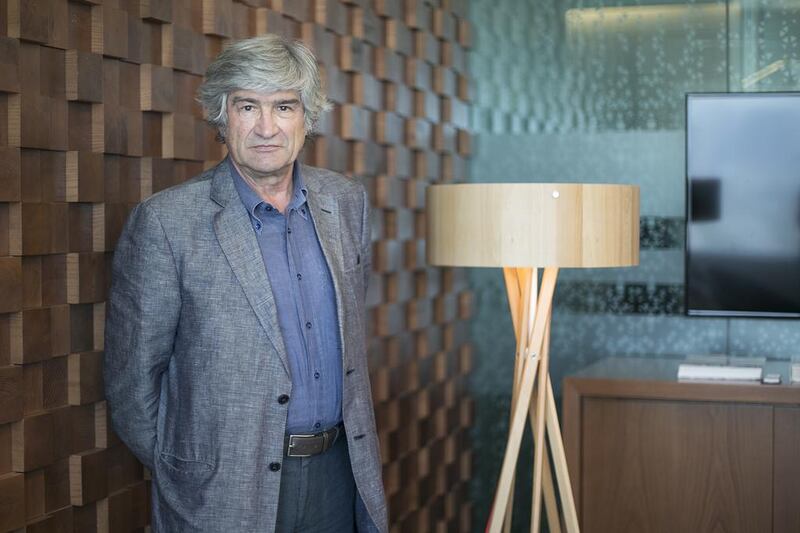Since the design of the Louvre Abu Dhabi was unveiled in 2007, the 180-metre-wide canopy that covers the museum’s galleries has been called many things – a dome, a cupola, a space frame, even an upside-down saucer.
Giuseppe Penone, however, sees the structure that will generate Jean Nouvel’s much-vaunted rain-of-light effect in a very different way.
“This space is like a fingerprint that can grow, that can propagate. It’s like when you touch water and ripples spread outwards from that point, or when you look at the growth rings inside a tree,” the sculptor says.
Penone, alongside the American neo-conceptual artist Jenny Holzer, has been commissioned to create the first contemporary works for the museum that is now scheduled to open next year. His talk of organic growth, propagation, trees and nature will come as no surprise to anyone familiar with the 69-year-old Italian’s five-decade career.
Born in 1947 in a rural community in Piedmont’s Maritime Alps, Penone started making work in the forests surrounding his native Garessio in the late 1960s, while he was still studying at the Accademia Albertina di Belle Arte di Turin.
One of Penone's earliest sculptures, It Will Continue to Grow Except at this Point, features a bronze cast of a hand grasping a sapling's trunk.
“I feel the forest breathing, and hear the slow, inexorable growth of the wood,” Penone wrote in 1968. “I match my breathing to that of the green world around me, I feel the flow of the tree around my hand placed against the trunk.”
At the time Penone described his use of natural materials as an attempt by a young man, uneducated in art, to engage with the only reality with which he was familiar. However, his use of timber, water, trees and rocks soon brought him to the attention of the art critic and curator, Germano Celant who, through a series of articles and exhibitions, developed the notion of Arte Povera.
An art movement that initially included Italian artists such as Alighiero E Boetti, Michelangelo Pistoletto and Mario Merz, Arte Povera also embraced the output of artists working internationally, such as the German Joseph Beuys, and referred not so much to poverty but to their use of non-traditional materials and rejection of conventions in sculpture and painting.
Penone's use of his own body and materials drawn from the natural world also define Germination, the site-specific installation he has developed for the Louvre Abu Dhabi.
A work of four parts, Germination consists of separate works in porcelain, terracotta and bronze including Leaves of Light, an idea Penone has been developing since the beginning of his career.
“I did some drawings in 1968 where I put mirrors between the branches of a tree,” the artist says.
Like the Louvre Abu Dhabi's eight-layered canopy, which has been designed by Ateliers Jean Nouvel to reflect and channel sunlight down into the museum's precincts in a moving rain of light, Penone's Leaves of Light features a bronze statue, a cast of a real tree, into which reflective steel panels have been inserted.
“The structure of a tree is developed in order to catch light,” he says. “Its form is a function of light, so the mirrors I have put in the branches are like the rain of light from the cupola, but they are achieved with another form.
“When you are under the cupola, inside the museum, you have a feeling that you are in a forest with the light coming down from above through a canopy of trees,” Penone says.
“So it is a piece that speaks to the reality of the architecture and it works with Nouvel’s rain of light to connect light from the ceiling to the earth.”
The fabrication of Leaves of Light, which is cast from a wild cherry tree that Penone chose from a wood close to his home near Turin, presented significant technical challenges.
“I had to find one that would [not only be] a good size in relation to the architecture but which also had an interesting form in its branches,” he says.
The tree had to be dissected into more than 100 parts, starting at the top so as not to break any of its smaller branches, and then each part was used to create a mould and a bronze cast using the lost-wax technique, a method of making sculpture that dates to classical antiquity.
“It’s astonishing that when you cast a tree the bronze becomes very similar to the wood. It develops a patina depending on where it is [because] it will oxidise in different ways,” Penone says. “If it’s close to the sea it will become blue or green but in other places it may turn black, which means that it remains very natural.”
The cast tree, which is 16 metres tall, stands on a bronze plinth in the shape of a piece of clay that Penone moulded by hand, a form that visually connects Leaves of Light with one of the other elements of his installation, Propagation.
A work that Penone devised in collaboration with the French porcelain manufacturer Sèvres, Propagation also builds on an idea that the sculptor has been developing for many years, the image of a fingerprint that steadily expands into an ever-widening pattern of concentric circles.
"I have used the fingerprint [motif] in drawings in the past but I have never worked in porcelain," the artist says, referring to a series of works, also called Propagation, which date back to 1994.
“It’s a fingerprint where I connect the lines together in order to have a link that continues across a surface, which gives you the idea of propagation,” he says.
To achieve this, a team of craftspeople at Sèvres have created a wall of 42 porcelain plates that weighs 400 kilograms.
At their centre, a single fingerprint forms the focal point of the installation and then expands, in a series of hand-drawn lines separated by a single millimetre, to a distance of almost four metres.
Quite apart from the installation's six-part fabrication process, which included ceramic techniques such as slip-casting, polishing, kilning and cutting, Propagation took 600 hours to paint.
“This was the real challenge of the piece but with Sèvres we found the technology and the savoir faire to realise the work,” the artist says.
The installation will sit in a specially-designed vitrine that has been constructed in one of the Louvre Abu Dhabi’s walls.
“When they asked me to think of something for the museum I had only seen renderings of the architecture but I was very interested because I know the idea is to do something, not just for locals but for the world,” says the 69-year-old.
“I think that is a utopian idea, especially in this region, to do something for peace and humanity, for life not death, and that is very positive.”
Penone’s vision, of an institution whose effect spreads organically from its epicentre on Saadiyat Island throughout the wider region, is not only consistent with issues the artist has investigated throughout his lengthy career but also represents the kind of alternative thinking about the project that led to his appointment.
“The commissions are site specific. They relate to and engage with the museum’s architecture and they also respond to its content in a way that is not curatorial,” says Jean-Francois Charnier, the scientific director of Agence France-Muséums the body that, alongside Abu Dhabi’s Tourism and Culture Authority (TCA), is charged with delivering the Louvre Abu Dhabi.
“They represent another kind of intelligence and they provide another way, another perspective, for people to think about the museum,” the Frenchman says.
“They are also a way to introduce contemporary creation and the thoughts of contemporary artists into a classical museum that contains art from the past and to show that the museum is also a museum of the present.”
nleech@thenational.ae
Creativity and Commissions a conversation between Giuseppe Penone and Jean-Francois Charnier, scientific director of Agence France-Museums, will be held as part of the Louvre Abu Dhabi: Talking Art series on November 17, from 4pm to 5pm, at Abu Dhabi Art.
